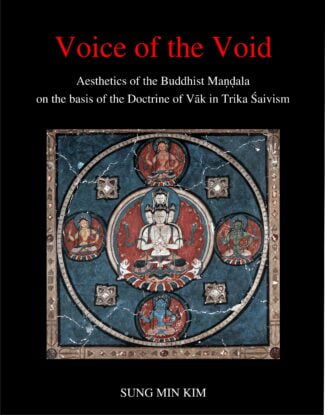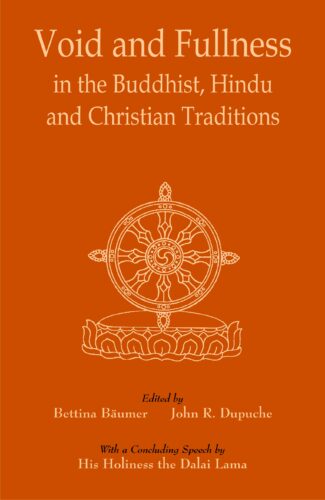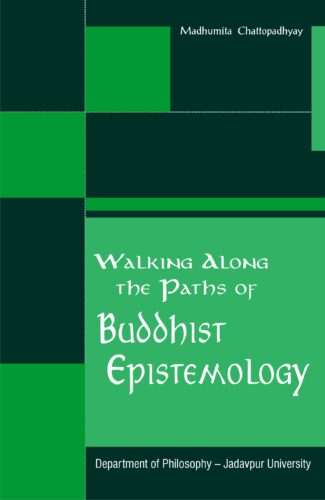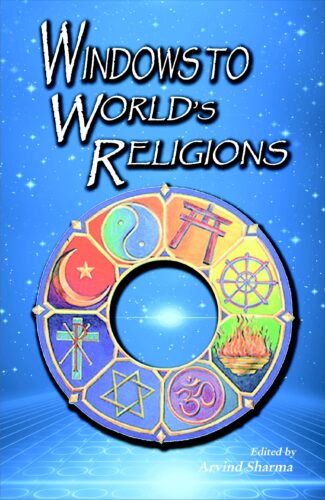Showing 231–240 of 243 results

Of a rare kind, this book does comparative analyses after studying seventeen Grhya-Sutras across four Vedas of the number and type of rituals of marriage in each Grhya-Sutra and the order of performance of rituals. It also lists the mantras (with English translation) and their sources and talks about the differences in employing the mantras.
Vivaha (marriage), in Hindu society, is one of the most important samskaras, out of the sixteen sacraments, which a person steps in with full understanding/consciousness. Marriage is a fascinating experience that stays alive in ones mind throughout the life. The mantras and slokas of the Grhya-Sutras of the four Vedas, chanted in this ritual, are in Sanskrit and a vast majority is unaware of their meanings and just follows the instructions of the celebrant priest, purohita.
The author delves deep into the Grhya-Sutras of Vedas and brings forth the details of vivaha samskara principles, philosophy, practices, rituals and so on. Grhya-Sutras Asvalayana, Sankhayana and Kausitaki of Rigveda; Paraskara (Sukhla Yajurveda), Apastamba and Hiranyakesin (Krsna Yajurveda), Baudhayana, Varaha, Manava, Agnivesya, Bharadvaja, Kathaka and Vaikhanasa of Yajurveda; Gobhila, Khadira and Jaimini of Samaveda; and Kausika of Atharvaveda are well explored and seriously analysed, having given the original mantras in Sanskrit with their English translation.
Of a rare kind, this book does comparative analyses of the number and type of rituals in each Grhya-Sutra and the order of performance of rituals.
This scholarly work creates a sudden seriousness and sanctity to vivaha samskara through the detailing of mantras and the rituals. Being in it, one is not far off the Vedic period, giving a new meaning and dimension to our understanding of Hindu vivaha samskara and its sanctity.

This volume examines how the perceptible form of Buddhist mandalas represents shunya (void), with special reference to the mandalas of Tabo and Alchi. On the basis of the concept of vak (subtle sound) in Trika Shaivism of Kashmir, it investigates where their aesthetic power derives from.
The research undertaken here about Buddhist mandalas is basically designed under the philosophical question how the visible dimensions of forms are related to their invisible contents. The textual sources in reference to Buddhist mandalas teach that the essence of mandalas is shunya (void) and their forms are the reflective images (pratibimba) of shunya. This volume investigates how the colourful form of Buddhist mandalas represents the prime concept of shunya, and what makes these mandalas visually powerful, leaving the impression of ßspiritual enhancementû in the heart of people who do not even know about the Buddhist doctrines.
The mandalas permanently represented in the monastic complexes of Tabo and Alchi in the Western Himalayas have been focused in order to examine a prominent role of visual dimensions of mandalas. In order to comprehend mandalas in the context of Buddhist philosophy, the texts of the Yoga-Tantra class have been looked up. Especially, the references to the tantric visualization-practice throw light on the internal experiences with mandalas.
Considering the fact that the Buddhist mandalas have been developed as a method of Mantrayana, being always combined with mantras and mudras, this volume presents the concept of vak (word, subtle sound, voice) as a key to explain how the ultimate state of shunya and perceptible forms of mandalas are related to each other. The doctrine of vak developed in the tradition of Trika Shaivism in Kashmir provides us with a systematic way to explain the non-dualism between all phenomenal objects and the Supreme Divine. The doctrine of four levels of vak is examined in the book for the purpose of interpreting the aesthetic phenomena and structuring the different levels of meanings of mandalas from the aesthetic perspective. On the basis of the vak theory, the external forms of mandalas have been explored and their visual principles have been technically analysed, in attempt to answer the question: how do the colourful forms of Buddhist mandalas resemble the formless shunya?

This book contains articles that examine the contribution of women saints from India and abroad and discuss the origin of bhakti, the Bhakti Movement, theris, and bhakti/saint poetesses. Their contribution constitutes a rich tradition of devotional discourse in terms of form as well as content.
This volume comprises articles that examine the contribution of women saints from India and abroad as well. The articles discuss the origin of bhakti, the Bhakti Movement, and bhakti/saint poetesses like Rishika Gargi, theris, Andal, Lal Ded, Akka Mahadevi, Mirabai, Gangasati, Tarigonda Vengamamba, Janabai, Bahinabai, Madhabi Dasi, Hildegard of Bingen, and Julian of Norwich from different regions and religions. Their contribution constitutes a rich tradition of devotional discourse in terms of form as well as content and has survived till now in folk and learned traditions. The articles discuss their voices, visions and sufferings physical and psychological and also the way they transcended them and voiced them in their compositions. Their uniqueness lies in their existence at multiple levels social, poetic, religious and spiritual among others. The volume would interest literary, cultural historians and religious scholars as well as general readers.

Interreligious dialogue is one of the important ways for overcoming cultural and religious differences and misunderstandings. But it has to reach the depths of the spiritual, philosophical and theological insights of the religious traditions. This volume throws light on concepts of Void (sunya) and Fullness (purna, in Greek pleroma) in the Buddhist, Hindu and Christian traditions.
Interreligious dialogue is one of the important ways for overcoming cultural and religious differences and misunderstandings, and for contributing to world peace. But such a dialogue has to go beyond the social, institutional and purely academic areas: it has to reach the very depths of the spiritual, philosophical and theological insights of the religious traditions. In Buddhism, Hinduism and Christianity such insights are expressed in the apparently opposite, but in reality complementary concepts of Void (shunya) and Fullness (purna, in Greek pleroma). These concepts lead to the respective spiritual experiences and their interpretations in scriptures and philosophies. This volume contains the papers presented at an interreligious seminar at Sarnath, Varanasi, organised by the Abhishiktananda Society, and inspired by the ideas and life of Swami Abhishiktananda (1910-1973). These papers throw light on these fundamental concepts from the different traditions, and are an invitation to dialogue. H.H. the Dalai Lama gave the concluding speech on the importance of interreligious dialogue.

This is a book on Buddhist epistemology dealing with different epistemological topics like the nature of knowledge, validity of knowledge, knowledge of knowledge, perception, erroneous perception, among others. The author has referred to different Sanskrit texts and literature available on these topics.
The monograph highlights the philosophical arguments offered by Buddhist thinkers on different aspects of knowledge. Various aspects of Buddhist epistemology right from the basic question of what the Buddhists mean by knowledge, the varieties of knowledge according to their belief and their explanations of the validity of knowledge are examined. A painstaking work of Prof. Madhumita Chattopadhyay, this study deals with different epistemological topics like the nature of knowledge, validity of knowledge, knowledge of knowledge, perception, erroneous perception, inference and its related issues like ascertainment of vyapti, antarvyapti, prasanganuman and fallacies of inference. The author has referred to many primary sources which include different Sanskrit texts as well as the latest secondary literature available on these topics and discusses the important role of concept of absence and the theory of apoha or negative nominalism as a substitute for universals in Buddhist metaphysics. An attempt is made to explore whether solutions to modern epistemo-logical problems as found in the Western tradition can be provided from the Buddhist perspective in order to show that Buddhist epistemology has a relevant role to play in the area of epistemology itself. The book would interest scholars and students interested in the epistemological and logical aspects of Buddhist philosophy.

How can we understand the Hindu tradition as alive today? That is the question which this book investigates. It asks for a broader understanding of history, rightful accounting of the Vedas and of other oral learnings. The goal of truth is sought by approaching different personalities and institutions of culture.
In India, there has long been a tendency to emphasize the spoken word which is passed on alive from an individual teacher to each individual student. But, through the development of modern media, more use is now made of the written word which records information externally, in institutions that have been industrially, socially and culturally organized. How then can we understand the Hindu tradition as alive today with its ancient emphasis upon the spoken word and the living individual? That is the question which this book investigates. Accordingly, it asks for a broader understanding of history, which would allow for a rightful accounting of the Vedas and of other oral learning. Through its continued emphasis upon the living word, the Hindu tradition asks for a deeper understanding of reasoned enquiry. Such reasons do not work primarily through mechanical instruments in the restricted way that modern physics does. Instead, it works essentially through a reflective investigation of our living faculties, which are thus cultivated and clarified. The goal of truth is not here sought through an institutional consensus; but rather as a common ground, which is approached quite differently through different personalities and institutions of culture.

How can we understand the Hindu tradition as alive today? That is the question which this book investigates. It asks for a broader understanding of history, rightful accounting of the Vedas and of other oral learnings. The goal of truth is sought by approaching different personalities and institutions of culture.
In India, there has long been a tendency to emphasize the spoken word which is passed on alive from an individual teacher to each individual student. But, through the development of modern media, more use is now made of the written word which records information externally, in institutions that have been industrially, socially and culturally organized. How then can we understand the Hindu tradition as alive today with its ancient emphasis upon the spoken word and the living individual? That is the question which this book investigates. Accordingly, it asks for a broader understanding of history, which would allow for a rightful accounting of the Vedas and of other oral learning. Through its continued emphasis upon the living word, the Hindu tradition asks for a deeper understanding of reasoned enquiry. Such reasons do not work primarily through mechanical instruments in the restricted way that modern physics does. Instead, it works essentially through a reflective investigation of our living faculties, which are thus cultivated and clarified. The goal of truth is not here sought through an institutional consensus; but rather as a common ground, which is approached quite differently through different personalities and institutions of culture.

A selection of papers presented at a global congress on World’s Religions after September 11, stressing the need for various religions to develop a better understanding of each other. The papers deal with Islamic, Christian, Bahai, Sikh, Primal and Hindu religious traditions and beliefs.
The volume is concerned with the role of religion in the present day. Presenting proceedings of a global Congress on Worlds Religions after September 11 held in September 2006 at Montreal, Canada, it stresses the need for interfaith friendships to develop understanding between faiths and remove stereotypes that have emerged concerning religious beliefs and their followers. Examining the thoughts of Western theologians and others on the role of religion, it discusses spirituality as being at the root of tolerance. The papers refer to Islamic, Christian Mennonite, Bahzi, Sikh and Hindu religious traditions and beliefs but bear specific reference to the North American Roman Catholic Retreat Centre at Pembroke, Ontario, Canada. They engage in examining specific topics pertaining to the different religious faiths and traditions. They examine the life of Guru Arjan Dev and his message and its significance today, the work of Mira Behn towards conserving the environment of the Himalayas, and the indigenous Australian Christian womens perception. The book provides a glimpse into the life, work and experiences of the spiritual women of Ramanashrama at Tiruvannamalai in Tamil Nadu and Ramanas views on womans right to spirituality, asceticism and salvation. It showcases the contribution of the Inter-religious Council of Central New York towards bringing people of different faiths and cultures into situations of mutual respect and trust. The volume includes the text of the Universal Declaration of Human Rights.

Providing detailed accounts of the women seers of Rigveda, this volume discusses the traditional expositions vis-à-vis the modern interpretations of those accounts. It minutely explains the sociocultural aspects of the select texts, thus exposing the world-view of those women seers.
This volume brings forth an in-depth study of Rigveda from the sociocultural perspective, analysing the various aspects of hymns ascribed to the women seers of the root Veda. Though modern scholars from the East and the West have made many an attempt in interpreting the hymns of the Rigvedic poetesses, those lacked a thorough study from the sociocultural perspective.
While providing detailed accounts of the women seers of Rigveda, this volume discusses the traditional expositions vis-à-vis the modern interpretations of those accounts. It minutely explains the sociocultural aspects of the select texts, thus exposing the world-view of those women seers. Their personal traits and compositions on the basis of the mythological data available in the Vedic and subsequent literatures enrich the volume further.
Apart from the liturgical peculiarities and literary analysis of the hymns of the women seers, and the language and stylistics of the texts from a linguistic point of view, the book deals with a study of the sentence patterns which, normally lacks in Sanskrit research works.

The book, highlights the essential import of the innocuous-looking, yet enigmatic, diagrams called Yantras surfacing from the occult practices of the tantrics. It examines a range of tantric yantras, with their varieties, applications, modes of construction and above all their iconographic features.
Hinduism is known for the bewildering profusion of its deities, who are represented not only in two or three dimensional anthropomorphic images, but also in abstract configurations, known as yantras. In yantras is, thus, seen almost a parallel with the surfeit of deities in Hindu tradition. Literally meaning an instrument, apparatus or a talisman, yantra is a kind of mystical diagram used, in tantra, for both meditation and invoking a divinity, and is believed to possess/arouse occult powers. Drawn only by the adept: the ones schooled in this arcane, highly intricate process, and energized by siddh mantras, these seemingly innocuous geometrical figures are employed for any number of reasons or desires: whether to attain wealth, ward off disease, beget a son, vanquish enemies, or even to cause somebodys death. This book, the latest from Professor Bunce, highlights the essential import of these innocuous-looking, yet enigmatic, diagrams surfacing from the occult Practices of the tantrics. The author, an internationally known scholar of Oriental Art, examines a range of tantric yantras, with their varieties, applications, modes of construction and, above all, their iconographic features. Also inter- woven in his text are lucid descriptions of all else associated with a yantra, notably, its deity, its specific purpose, its predominant and secondary numbers and its mantra. Carrying beautiful visual representations of over a hundred yantras, Professor Bunces study holds out enduring appeal to the readers concerned not only with the iconography of tantric yantras, but their mystifying under-pinnings as well.
| There are no products |